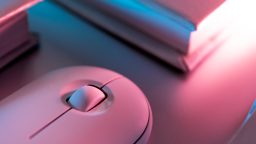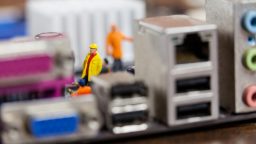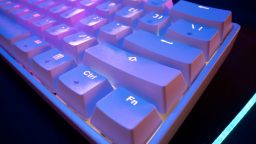Artificial Intelligence (AI) has made waves in various fields, from healthcare to transportation, but one area where it has had a particularly profound impact is the world of creativity and art. As AI technologies evolve, they are increasingly being used to create, enhance, and reimagine art in ways that were once unimaginable. Whether it’s through the generation of visual art, music, or literature, AI is pushing the boundaries of what we consider to be creative and challenging traditional notions of authorship and artistic expression. This article explores how AI is transforming creativity and art, and the implications it has for artists, audiences, and the future of artistic endeavors.
- AI-Generated Art: A New Form of Creation
One of the most visible impacts of AI on creativity is the rise of AI-generated art. Using algorithms and deep learning models, AI programs are now able to generate paintings, drawings, sculptures, and other visual art forms. These systems, such as OpenAI’s DALL·E, Google’s DeepDream, and various GANs (Generative Adversarial Networks), can analyze large datasets of existing art to create entirely new works that mimic or transform established styles.
AI-generated art often blurs the lines between human and machine creativity. In some cases, AI is used as a tool to help artists create new pieces, while in other cases, the AI itself is responsible for the entire artistic creation. The results can be stunning—intricate and imaginative pieces that provoke thought and challenge our perceptions of what art is and who has the right to create it.
While some see AI-generated art as a groundbreaking innovation, others question its authenticity. The concept of an artwork created by an algorithm raises fundamental questions about authorship. If a machine can produce art, who owns the work? Is it the AI, the creator of the AI, or the user who instructed the machine? These questions continue to spark debates in the art world, forcing us to reconsider the role of the artist in the creative process.
- AI and Music: Composing the Future
AI’s influence on creativity is not limited to visual art—it has also made significant strides in the music industry. AI-powered programs like OpenAI’s MuseNet, Google’s Magenta, and Jukedeck are capable of composing original pieces of music across various genres, from classical symphonies to pop hits. These systems can analyze thousands of existing compositions, learn patterns and structures, and generate new music that is both harmonious and innovative.
AI’s ability to generate music can be a valuable tool for musicians, offering inspiration and novel compositions. For example, artists can use AI to create melodies, harmonies, or beats, which they can then build upon and modify. This allows for faster production of music and opens up new avenues for experimentation and collaboration between human artists and machines.
However, like AI-generated art, AI-generated music also raises questions about creativity and originality. If AI is capable of composing music, what does that mean for human musicians? Some argue that AI could democratize music creation by making it more accessible to people who may not have formal training, while others fear that AI will diminish the value of human expression in art. Regardless, AI’s growing presence in music is undeniable, and it is shaping the future of sound creation in exciting and unforeseen ways.
- AI and Literature: Writing Beyond Human Limits
In the realm of literature, AI is also making its mark. Tools like GPT-3 (the model behind this very conversation) are capable of generating human-like text, from short stories and poetry to full-length novels. These AI systems are trained on vast amounts of written content and can produce written works that mimic the style and tone of existing authors or generate entirely new voices.
AI has been used in various creative writing projects, from generating story ideas to writing entire books. Some writers use AI as a collaborator, feeding it prompts or ideas and allowing the machine to generate sections of text, which they then refine. In other instances, AI has been used to generate poetry or even assist in developing video game narratives.
The rise of AI in literature challenges the notion of the author and opens up new possibilities for storytelling. If AI can create convincing narratives, do we need human writers, or can machines take over the creative process entirely? Some argue that AI can never truly replicate the nuance and emotional depth of human writing, while others see AI as a valuable tool for enhancing creativity. This debate reflects the broader discussion of AI’s role in artistic creation, raising important questions about creativity, originality, and the nature of art.
- AI in Film and Animation: Changing the Way Stories Are Told
In film and animation, AI is revolutionizing the way stories are told, from scriptwriting to animation. AI tools can help generate scripts, assist in visual effects creation, and even automate aspects of editing, making the production process more efficient and cost-effective.
For example, AI can be used to generate realistic animated characters or landscapes based on a script’s requirements, saving animators time and allowing for more creative freedom. AI can also assist in generating complex visual effects, reducing the workload of artists and enabling them to focus on the artistic elements of the production.
Additionally, AI is increasingly being used in the film industry to analyze audience reactions, predict box-office success, and even guide decision-making in filmmaking. By analyzing trends and patterns, AI can help studios understand what types of content are likely to resonate with audiences, offering insights that can shape the creative process.
Despite its benefits, AI’s growing role in filmmaking raises concerns about the loss of creative control. Some filmmakers worry that relying too heavily on AI tools could compromise artistic integrity and lead to formulaic content driven more by algorithms than by human creativity.
- The Ethical Implications of AI in Art
As AI becomes more integrated into the creative process, it raises a host of ethical questions. One of the most pressing concerns is the question of authorship and intellectual property. If an AI system creates a piece of art, who owns the rights to it? The creator of the algorithm, the company that owns the AI, or the person who commissioned the work? These legal and ethical issues are still being explored and will likely continue to evolve as AI technology progresses.
Another concern is the potential for AI to perpetuate biases. If AI systems are trained on data that reflects existing societal biases—such as gender or racial stereotypes—there’s a risk that the art created by these systems could reflect and reinforce these biases. Ensuring that AI-generated art is fair and inclusive is a challenge that will require careful consideration and oversight.
Additionally, some fear that the increasing use of AI in art could devalue human creativity and artistic expression. While AI can certainly enhance the creative process, many believe that human emotion, intuition, and experience cannot be replicated by machines. The value of art may lie not just in the final product but in the human journey of creation, something that AI, no matter how advanced, may never fully replicate.
- The Future of AI and Art
Looking ahead, AI will undoubtedly continue to shape the future of art and creativity. Rather than replacing human artists, AI is likely to serve as a tool that enhances and expands creative possibilities. Artists will increasingly use AI to push the boundaries of their work, exploring new styles, mediums, and forms of expression that were once thought impossible.
The future of AI in art will likely be collaborative, with humans and machines working together to create new, innovative forms of artistic expression. As AI continues to evolve, the line between human creativity and machine-generated content may become increasingly blurred, offering new opportunities for artists and audiences alike.
In conclusion, AI is both a tool and a challenge for the world of creativity and art. It pushes the limits of what is possible, expands our understanding of the creative process, and forces us to confront questions about the role of human agency in art. Whether it’s visual art, music, literature, or film, AI is transforming the way we think about and create art—creating an exciting, if uncertain, future for the world of creativity.





